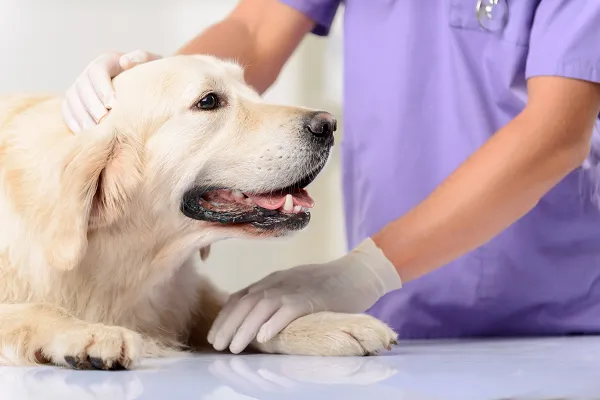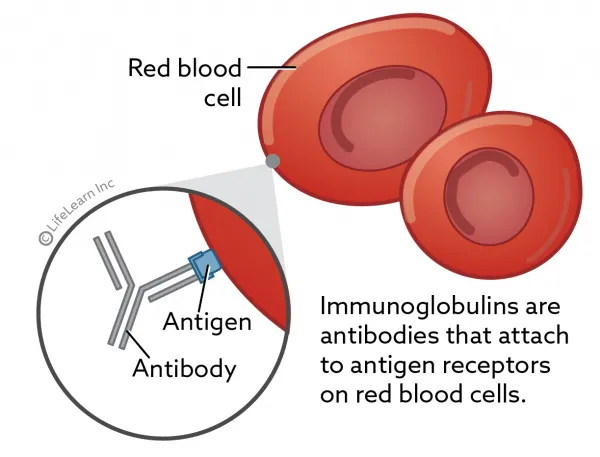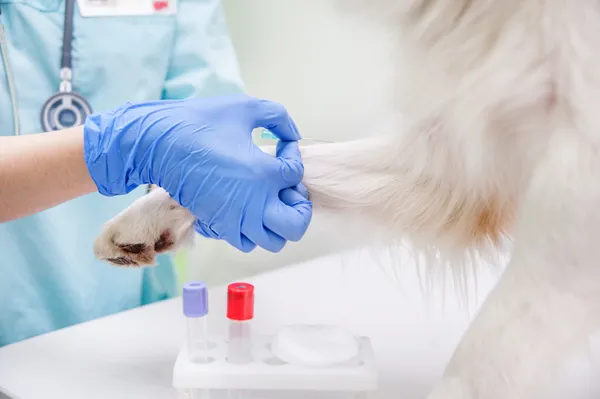DNA Testing

DNA is a large complex molecule that carries the genetic information or genetic code of an organism. All common forms of life, such as viruses, bacteria, plants, and animals carry a copy of their own genetic code in each of their cells. Each organism has a unique section of DNA that is just like a fingerprint. DNA-PCR is often used to detect the presence of infectious organisms; especially when detecting extremely small numbers of infectious organisms and for detecting certain viruses and bacteria that are difficult to diagnose by other methods.
Diarrhea Questionnaire for Dogs

If your dog is having diarrhea, please complete this questionnaire as accurately as possible before your appointment. This information will be very helpful to your veterinarian in determining the cause of diarrhea.
Diabetes in Dogs: Testing and Monitoring

Testing for diabetes includes confirming hyperglycemia and glucosuria while looking for other conditions by taking a complete blood count (anemia, infection), biochemistry profile (hepatic disease, pancreatitis), and a urinalysis (urinary tract infection). Monitoring includes regular glucose curves and additional exams and testing based on the pet owner’s monitoring of their dog’s clinical signs at home. Urine glucose testing and fructosamine are sometimes used in diabetic monitoring and urine testing for infection may be recommended.
Dexamethasone Suppression Tests

Dexamethasone is used to test the level of cortisol hormone in the body. Injection of dexamethasone will cause a decreased level of cortisol in a normal pet; however, in a pet with Cushing’s disease, there is minimal or no decrease in cortisol level. Other diseases can suppress cortisol production, so it is important to rule these out prior to dexamethasone testing. Knowing the type of Cushing’s disease your pet has can guide treatment decisions and offers a more defined prognosis.
Cytology – Collecting Cells from Surfaces

Cytology is the microscopic examination of cells that have been collected from the body. Lesions on the surface of the skin or from moist body cavities can be sampled very simply by scraping, swabbing, flushing, or making impressions of the tissue. The collected cells get looked at under a microscope and in many cases a diagnosis can be made to determine the best form of treatment.
Cytology – General

Cytology is a useful tool to often diagnose abnormal lumps on your pet’s body as well as evaluation of fluid samples and tissue surfaces. It is relatively simple and inexpensive but can provide a lot of information. Depending on results, further tests may be indicated to best help your pet.
Cushing’s Disease – Testing

Cushing’s disease, or hyperadrenocorticism, is the overproduction of cortisol hormone by a dog’s body. The clinical signs of Cushing’s disease are similar, regardless of the underlying cause of the disease. However, it is essential to identify the type of Cushing’s disease as the treatment and prognosis differ slightly depending upon the form of the disease.
Coombs’ Test

A Coombs’ test is used to test for a disease called autoimmune hemolytic anemia (IMHA). IMHA is a condition where the immune system breaks down or destroys red blood cells, leading to anemia. The test detects the presence of immunoglobulins (antibodies) on the surface of red blood cells. Taken together, the physical findings and the laboratory data (such as a Coombs’ test) may suggest that immune-mediated destruction of red blood cells is the most likely cause of your pet’s anemia.
Complete Blood Count (CBC)

The complete blood count (CBC) assesses different parameters of the cells in the blood including total number, appearance, size, and shape. Red blood cells, white blood cells, and platelets comprise the cellular component of the blood.
Coagulation Tests

Coagulation is the series of events that result in the formation of a clot. In the body, coagulation occurs after any injury to a blood vessel or tissue, in order to stop the bleeding. Certain diseases such as liver disease and rodenticide toxicity can affect the production of clotting factors.

